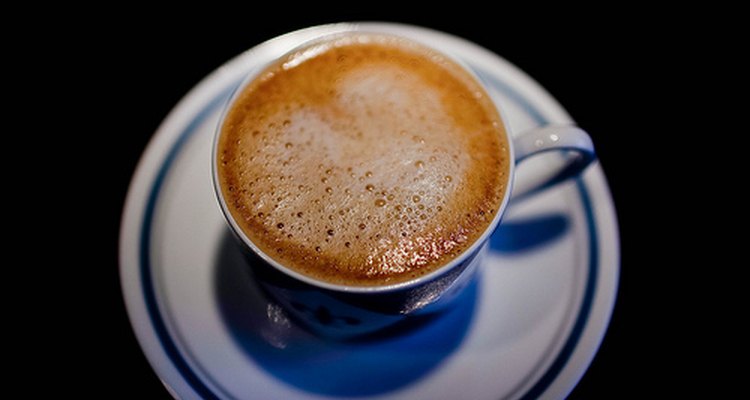
Originating in Italy, a traditional cappuccino is a combination of espresso (a type of concentrated coffee), milk and in some cases, milk foam or whipped cream. The majority of calories in a cappuccino come from the milk. Calorie content varies based on the type of milk used. Other seasonings such as cinnamon and nutmeg are sometimes added for extra flavor, but don’t contribute any additional calories.
Calories
A 12 oz. cappuccino with soy milk contains 64 calories. A 12 oz. cappuccino with nonfat milk contains 75 calories. A 12 oz. cappuccino with whole milk contains 120 calories.
Carbohydrates
Most of the carbohydrates in a cappuccino come from the carbohydrates in the milk. A 12 oz. cappuccino with soy milk contains 9 g of carbohydrate (7 g sugar). A 12 oz. cappuccino with nonfat milk contains 11 g of carbohydrate (9 g sugar). A 12 oz. cappuccino with whole milk contains 10 g of carbohydrate (9 g sugar).
Protein
The milk in a cappuccino contributes a small amount of protein. A 12 oz. cappuccino with soy milk contains 3 g of protein. A 12 oz. cappuccino with nonfat milk contains 7 g of protein. A 12 oz. cappuccino with whole milk contains 6 g of protein.
Fat
Fat content varies widely based on the type of milk used. Cappuccinos with nonfat milk are fat free. A 12 oz. cappuccino with soy milk contains 2 g of fat (0.2 g saturated fat). A 12 oz. cappuccino with whole milk contains 6 g of fat (4 g saturated fat).
Vitamins/Minerals
Cappuccinos are not considered nutrient dense. The main vitamin found in cappuccinos is Vitamin A, which is a fat-soluble vitamin that aids in cell metabolism. A 12 oz. cappuccino with soy milk contains 6 percent of the recommended daily value (DV). A 12 oz. cappuccino with nonfat milk contains 9 percent DV. A 12 oz. cappuccino with whole milk contains 5 percent DV. As for minerals, cappuccinos with nonfat milk and whole milk are high in calcium (20 and 23 percent DV, respectively). Cappuccinos with soy milk contain a moderate amount of calcium (16 percent of daily value) and a small amount of Iron (3 percent of daily value). Calcium helps maintain bone and teeth health. Iron transports oxygen through the blood.
Related Articles

Swiss Cheese Nutrition
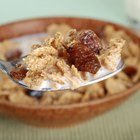
Calories in a Bowl of Raisin Bran Cereal

How to Dissolve Non-Instant Milk Powder

Can White Gravy Be Made With Almond ...

Nutrition Information on Blueberries

How to Freeze Tzatziki
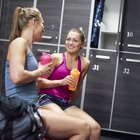
Ingredients in a Curves Protein Shake
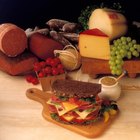
Calories in One Slice Provolone Cheese

How Many Calories Are in a Slice of ...

How to Locate a Missing Person in ...

The Nutrition of 15-Bean Soup

How Do I Curdle Soy Milk With Lemon ...
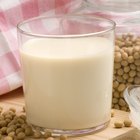
Is Soy Milk Casein-Free?

How Many Calories Are in Butternut ...
Calories in a Cucumber and Avocado Roll

The Sugar in Mangoes

How to Make Fresh Strawberry Frosting ...

Calories in a Tablespoon of Cream Cheese

Fiber in Soybeans

How to Get Rid of Skunk Smell With ...
References
Writer Bio
Born an Army brat, Erik Odom has been personal training clients for four years. Odom is certified through the American College of Sports Medicine (ACSM). He also holds a Bachelor of Science in human nutrition, foods and exercise from Virginia Tech.
Photo Credits
Image by Flickr.com, courtesy of Vox Efx